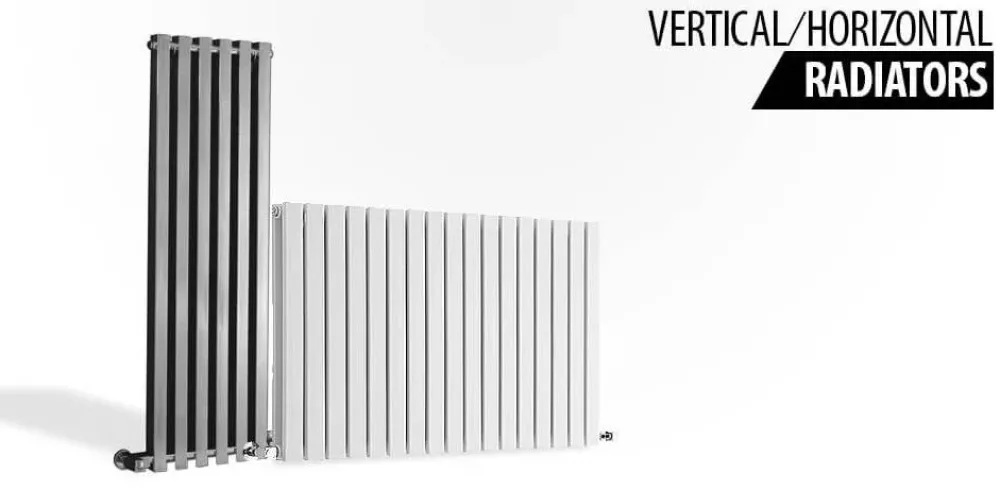Modern radiators are available in just about every imaginable shape, size, design and specification. Which can often make it difficult to know where to start. Nevertheless, itâs possible to immediately split the market right down the middle and narrow your options down, by deciding whether to go for a horizontal or vertical radiator.
But whatâs the difference? And does it really matter which of the two you choose for any living space within your home?
Both Aeon and Ultraheat stock horizontal and vertical radiators in shapes and sizes to suit every room. If unsure as to what (if anything) separates the two options, hereâs a brief overview to help you along:
Vertical radiators
A relatively new addition to the marketâ¦at least comparatively speakingâ¦vertical flat panel radiators extend upwards and emit heat toward the centre of the room or space. Far taller and more imposing than traditional radiators, vertical radiators are approached more as decorative elements than simple functional installations. Manufacturers tend to get far more creative with vertical radiators than their horizontal counterparts, though both types of radiators can be equally stylish.
In a practical sense, vertical radiators can be great for smaller rooms as they occupy minimal horizontal space â instead making use of largely unused vertical space. Kitchens, bathrooms and smaller bedrooms in particular make ideal spaces for vertical radiators â not to mention hallways, landings, porches and so on.
Horizontal radiators
The alternative option being the more traditional radiator, which extends outwards along the wall with minimal height. Once again, the horizontal radiator works by projecting its heat directly toward the centre of the living space. In most instances, horizontal radiators are strategically placed underneath windows as a means by which to counter the colder temperatures in the immediate area. Whatâs more, horizontal radiators are much easier to âhideâ behind items of furniture and other fixtures, keeping them largely out of sight if required.
That said, larger pieces of furniture â a couch for example â placed in front of a radiator will both inhibit the transfer of heat into the room and also result in much of the heat being absorbed by the item in question. Hence the importance of being strategic when working with horizontal radiators â particularly in smaller rooms.
Making the right choiceâ¦
In terms of which represent the best choice for you, it all comes down to a combination of your own personal preferences and the specifics of the space youâre working with. In smaller rooms with limited space available, vertical radiators can be ideal. That said, if looking to make a real visual statement in any room of any size, the vertical option can likewise be great.
On the other hand, those looking to create a more traditional and understated look will be right at home with classic horizontal designs. Which when picked up form leading brands like Aeon and Ultraheat radiators can be every bit as elegant and stylish as their vertical cousins.
Consider room size, your own personal styling preferences and budget limitations â after which itâs a case of pure choice and zero compromise!
This article was provided by heatcodirect.com.
Manufacturing & Engineering Magazine | The Home of Manufacturing Industry News













